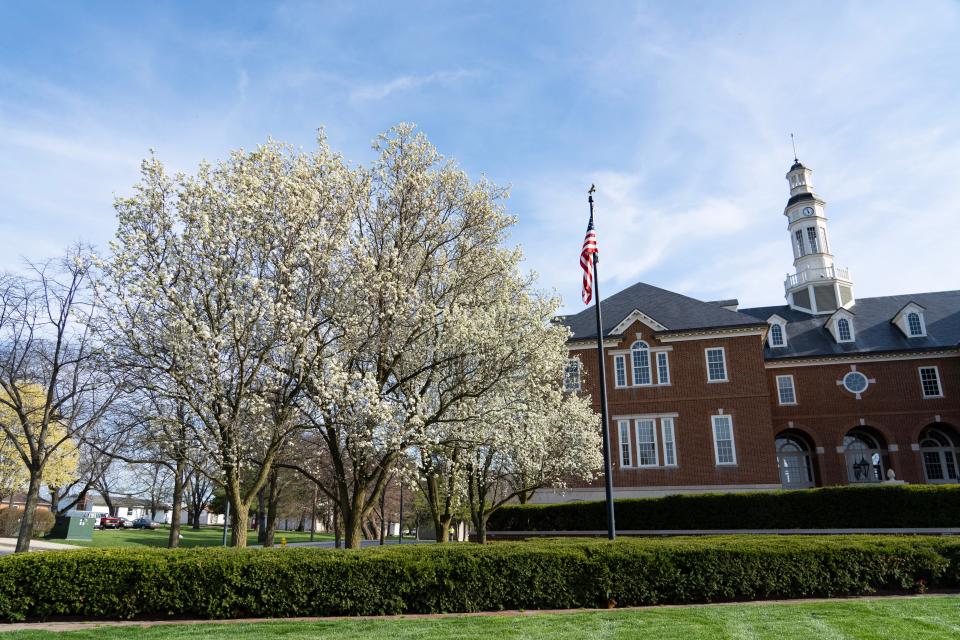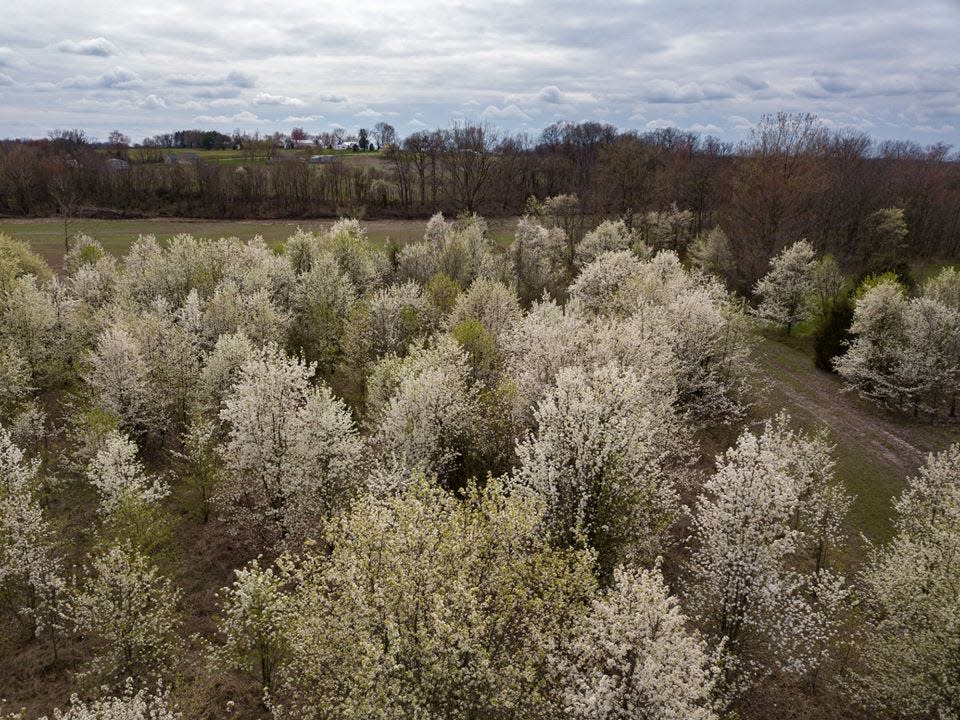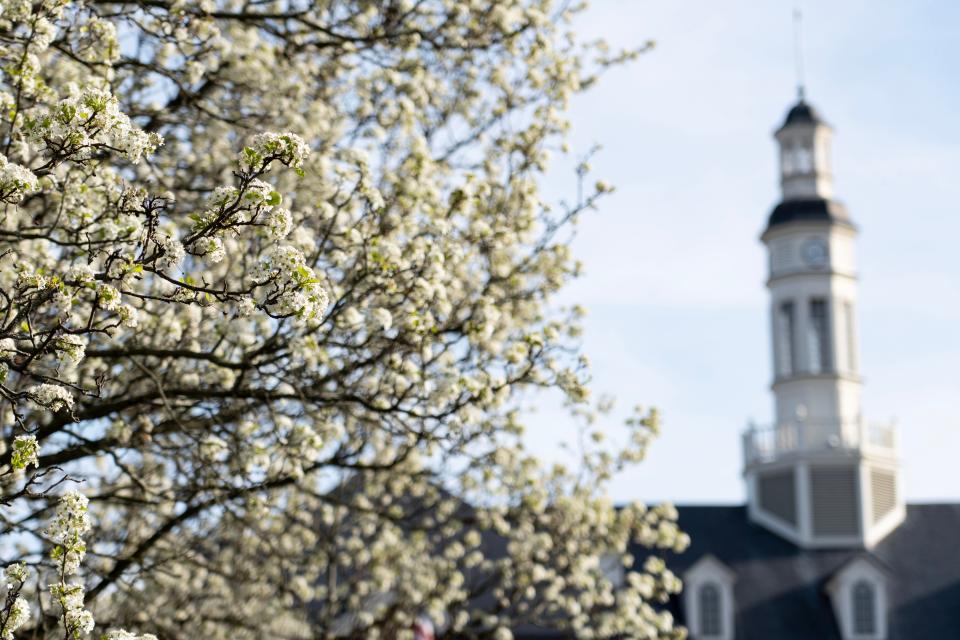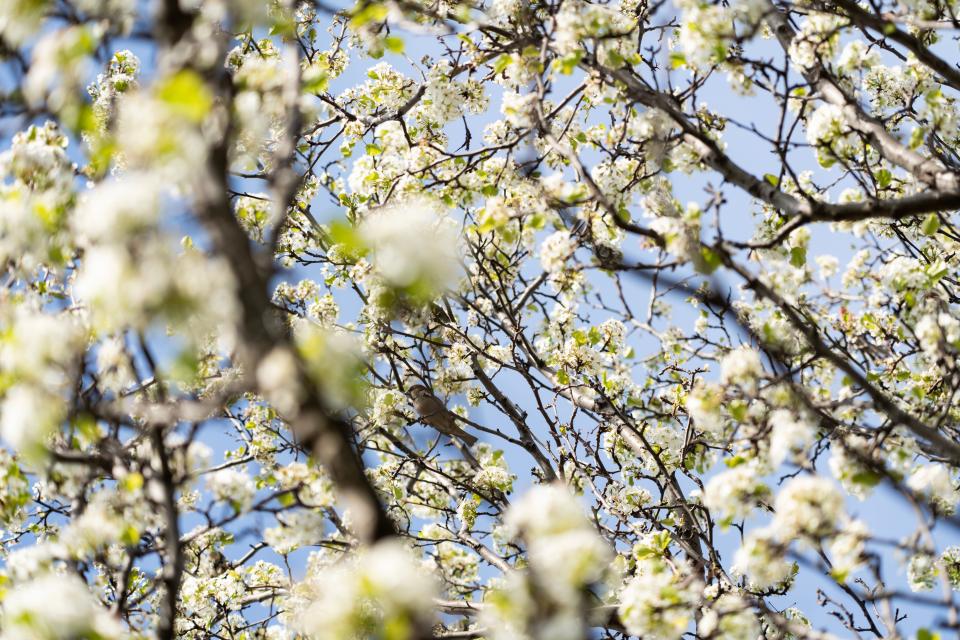The tree people love or hate: Carmel taking long-term approach to replacing Callery pears
Callery pear trees have been used for decades in commercial and residential landscaping, compact enough for small spaces while producing a dramatic flush of white flowers that herald the arrival of spring.
But the trees more generically called Bradford pears are as destructive as they are beautiful. That's why the city of Carmel is working on a long-term plan to phase out that can choke out native ecosystems.
Carmel took out more than 50 pear trees this year in the Lexington Farms neighborhood in a step forward in its initiative to address the controversial and invasive species originally imported to the U.S. from China.
Mike Hollibaugh, director of the city’s urban forestry division, said there have been talks about the phase-out since around 2015.
“We’re aiming for a balanced urban forest so when the next emerald ash borer or something that catastrophic occurs we don't have a major problem,” Hollibaugh said.
Indiana allergy season: Indianapolis pollen counts explode as peak allergy season hits. Here's what to know

The ultimate plan for the city is to build an urban forest using a mix of native trees that can stand up to the poor soils of parking lot gardens and public right-of-ways, and to build a full canopy for the city. The growing momentum to do something about Callery pear trees, Hollibaugh said, gives the division more confidence that removing them is the right thing to do.
“Carmel has been a Tree City for 30 years and we have a lot of pride in our forestry program and I think the community has a lot of pride, too,” Hollibaugh said.
The city already has completed pear removal projects in a handful of different neighborhoods, keeping track of where the trees are with maps showing concentrations in public right-of-ways and along streets of different neighborhoods.
Scrub Hub: Are Indiana homeowners planting trees the wrong way? The answer is most likely
Carmel’s Callery complications
The road to getting people on board with the phase-out plan hasn’t been a straightforward, Hollibaugh said. It even took some convincing to get Mayor Jim Brainard on board. Once the Hamilton County Invasives Partnership turned up at council meetings to talk about Callery pears and the harm they can cause, Hollibaugh said the mayor began to come around on the project.
The pear trees aren’t just in right-of-ways or lining neighborhood streets. Bradford pears can be spotted on the library grounds, at the high school and even in the lawns of Town Hall.
The trees, which spread prolifically, have also begun to overtake many areas where they were not initially planted. They can be found along Hazel Dell, the White River and many undeveloped areas. The trees had even cropped up on 96th Street and Westfield Boulevard, creating a dense habitat choking out native biodiversity before the city cleared them.

“That (area on 96th and Westfield) was like the poster child for what can happen,” Hollibaugh said. “It was quite an accomplishment to take those out.”
The push toward eradication will require a slow and steady approach.
“Removal season and planting season do not always line up,” Hollibaugh said. “We will, like at Lexington Farms, have some trees planted this spring and another wave in the fall and that will complete the (replacement) process.”
Beautiful destruction
Callery pears, and the Bradford subspecies, are plants that people love or hate, said Megan Abraham, director of IDNR’s Entomology and Plant Pathology. The trees became popular because they flower quickly and are perfect for newly built neighborhoods looking for some aesthetics.
“At the time they put those trees in, they thought they were sterile,” Abraham said. “Mother nature knew better.”
Normally, a single Callery or Bradford pear is sterile. Pollination is possible, however, if a different subspecies is nearby or if the original tree’s roots are damaged. An exposed root, nicked by a passing lawn mower, is enough to sprout new growth that can pollinate the tree from which it grows.
More invasives: What is a spotted lanternfly? And how can you help stop the invasive insect?
Different subspecies of Callery can cross pollinate and begin to make fruits. Birds then carry and spread the seeds in droppings.
“The danger there is essentially this one is a fast grower, and it shades out everything,” Abraham said. “It can go into an area we want to start developing natural habitat on and shade out native species. That kills all those native plants and we’re left with this grove of Callery pear trees.”
Another problem caused by the Callery’s fast growth is that the trees tend not to be hardy.

A bad storm can weaken a tree and if the Callery is large enough, it can kind of snap in half, Abraham said. The trees can also rot out from the inside.
“It’s not a great tree to have around long-term,” she said. “After 40 years or so, you’re going to have to replace it because it has broken so many times and maybe peeled down the middle.”
These problems were not apparent when Callery and the Bradford species gained favor in the U.S., where they were often used to line streets and add pops of green in new developments.
History of Callery
First imported into a private arboretum from China in the early 1900s, U.S. residents started falling in love with the Callery pear in the 1960s. They were initially introduced to Maryland and began to sweep across the southern states and into the Midwest.
Theresa Culley, a professor at the University of Cincinnati, helped Ohio move to commercially ban Callery pears in the state. She runs The Culley Lab, which focused on the invasion biology of the species.
The Bradford pear is a clone, and everyone liked it and began planting it all over the place, Culley said. When those trees aged 15 or 20 years, they began falling apart because there is no central leader, or trunk.
Once all those trees started dying, people who liked them wanted a better and improved variety.
“Really, it’s the fact that people started to plant a mix of different cultivated varieties that caused the problem,” Culley said.

Callery have a genetic mechanism where a tree’s pollen can recognize itself. Because all Bradford pears are clones, one tree cannot pollinate another tree of that same variety.
“If you get a different tree it sends its pollen to Bradford, suddenly Bradford recognizes a different genetic individual and fertilizes,” Culley said.
There are now more than 60 varieties of Callery pear bred in the nursery industry for aesthetics such as size, shape or the colors it produces.
As awareness grows on the destruction Callery can cause on ecosystems, Culley said the fact that anyone is being proactive and taking out the trees is remarkable.
For Carmel, Hollibaugh said, the city has grown into what officials see as a leadership role.
“Hopefully the people can start to understand this isn't the mayor dictating the removal,” Hollibaugh said. “It’s based on science and the evolution in thought of how it's not just pears, and honeysuckle; there's whole movements that are trying to help with the right decision making. We’re just a small part of that.”
Karl Schneider is an IndyStar environment reporter. You can reach him at karl.schneider@indystar.com. Follow him on Twitter @karlstartswithk
IndyStar's environmental reporting project is made possible through the generous support of the nonprofit Nina Mason Pulliam Charitable Trust.
This article originally appeared on Indianapolis Star: Carmel's long road to ridding the city of invasive pear trees

